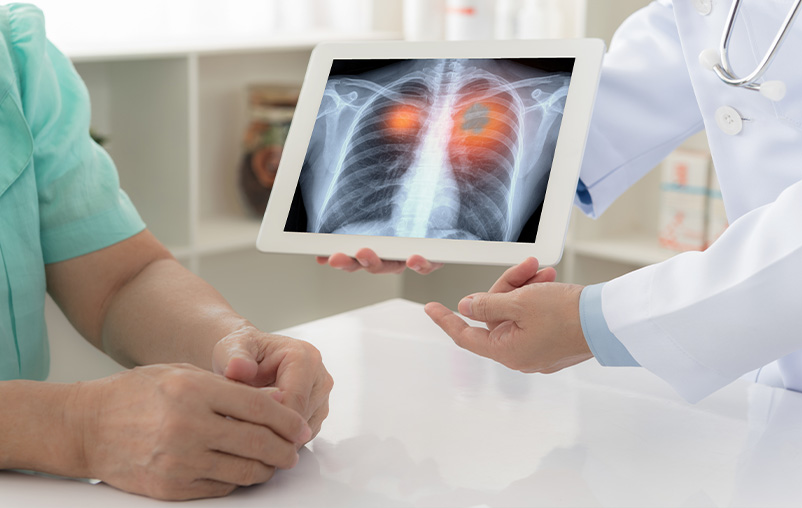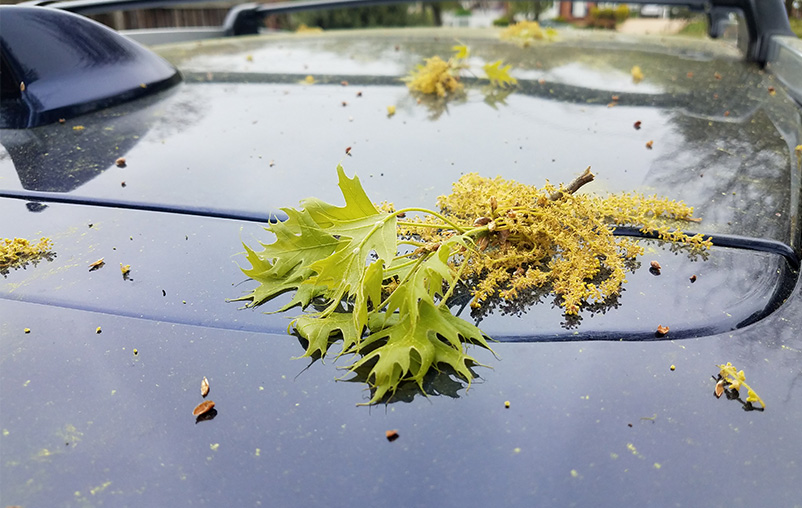Pioneering Lung Transplant Program Celebrates Milestone
Retired Pilot is the 500th Patient to Receive Lung Transplant at University Hospital
Earl Tomlin’s ordeal began two years ago with a nagging cough. A short time later he was diagnosed with pulmonary fibrosis, a scarring of the lungs that makes it difficult to breathe.
As the months passed and his disease progressed, the 69-year-old retired Southwest Airlines pilot — who divided his free time between the gym and the golf course — could no longer cross the room without being tethered to an oxygen tank.
“I was on oxygen constantly and still not doing well,” said Mr. Tomlin, who lives in Boerne. “You don’t realize how it affects everything, the lack of oxygen to your brain, your muscles. It starts catching up with you.”
On May 4, Mr. Tomlin underwent a single lung transplant at University Hospital — becoming the 500th lung transplant performed by UT Medicine San Antonio doctors over a storied history spanning almost three decades.
Some of the earliest advances in lung transplantation occurred through the partnership between University Health System and the UT Health Science Center — a partnership known today as University Transplant Center.
The program began under the leadership of the late Dr. J. Kent Trinkle, who performed the first lung transplant in South Texas in 1987, only four years after the approval of the first effective anti-rejection drug, cyclosporine, revolutionized the field of organ transplantation worldwide.
The San Antonio program quickly became known for its innovations in lung transplants, not only producing technical advances in the surgery itself, but broadening its uses. The first single lung transplant in the world to treat pulmonary hypertension was done here, as was the first single lung transplant in North America to treat emphysema.
Continuing a Legacy of Innovation
That tradition continues today, with innovations such as the San Antonio Lung Transplant protocol, or SALT. Developed by pulmonologists Drs. Luis Angel and Deborah Levine, both professors of medicine at the Health Science Center, SALT is used around the world to better prepare donor lungs for transplant.
“Historically, only about 15 percent of donors can donate their lungs,” said Dr. Scott Johnson, associate professor of surgery at the Health Science Center, and surgical director of the lung transplant program. “With active management of these donors, we’ve been able to double that to close to 30 percent. I think that’s another unique aspect of our program.”
Organ donors often spend long periods on ventilators, which can damage lungs while leaving other organs intact, Dr. Johnson said. The SALT protocol provides a checklist of steps to take after a donor is identified to keep the lungs viable for transplant.
The University Transplant Center typically performs bilateral — or double-lung — transplants, which often leads to better outcomes for patients. Most other programs perform mostly single-lung transplants, which can increase the number of patients transplanted, but has some downsides.
A Rapid Recovery
In Tomlin’s case, the team opted to transplant one lung for medical reasons, said Dr. Daniel DeArmond, assistant professor of surgery at the Health Science Center, who led Tomlin’s transplant team.
“He had a previous heart operation, a special kind of bypass surgery, which made it such that we didn’t want to approach the operation the same way we typically do because of the hazard of undoing some of the work that had been done,” Dr. DeArmond said.
After receiving his new right lung, Mr. Tomlin, spent only two days in an intensive care bed, and another six days in a private room before returning home able to breathe normally. He’s hoping to get back on the golf course soon. The retired pilot would also like to resume traveling with his wife.
“I’m grateful to University Hospital,” Mr. Tomlin said. “It’s just incredible the attention that I have received. It always seems personal. Every time I talk to somebody, it’s like I’m the only person they’re concerned with.”
“If Dr. Trinkle were alive today, he would be so proud of the advances the team he founded has made,” said Dr. John Calhoon, chairman of cardiothoracic surgery at the Health Science Center, and who trained under Trinkle and helped performed some of those early lung transplants.
“He was known for making things simpler and easier,” Dr. Calhoon said. “Drs. Angel, Levine, DeArmond and Johnson have continued that approach, and made many advances in implantation technique and donor management, which have been emulated around the world. All of us at the Health Science Center can point to this team with great pride.”
Patient No. 1
On Nov. 9, 1987, retired electrical engineer Roy Kasten, 53, underwent a double-lung transplant after a 14-year struggle with alpha 1 antitrypsin deficiency, an inherited disorder in which the body is unable to produce a protective substance in the lungs.
Mr. Kasten and his wife Barbara had moved from Denver to San Antonio in 1983, hoping that the lower elevation might help his breathing. He had been an advocate for lung disease patients after becoming sick, serving as president of the Denver chapter of Emphysema Anonymous, and launching a chapter in San Antonio after moving here. At the same time, the couple also became advocates for organ donation, which they believed to be Mr. Kasten’s last medical option.
Unfortunately, Mr. Kasten’s advanced illness at the time of surgery proved too much, and he died 11 days after receiving his new lungs. He had known the risks were high, but never had a moment’s hesitation because of his advocacy, his family said.
“Roy knew going into the surgery what the risks were,” Barbara Kasten said at the time. “He and I both believed, however, that no matter what the outcome, the surgery would be helpful to the organ transplantation program because they would learn so much.”
Mr. Kasten and other early transplant patients were equally pioneers in advancing what we know today about lung and other organ transplant patients, making the procedure safer and better for patients such as Earl Tomlin.



